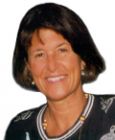Play
Five Inspirational Films
These films will inspire teachers, parents, therapists and anyone who loves kids
Posted October 3, 2016
With the school year starting, it is natural to turn our thoughts to kids, teachers, and curricula. What should children be learning? What should teachers be teaching? How do they get along with each other? There are many good places to look for answers to these questions: libraries, history, observations, personal experience, experts, and science. But, one of my favorites is film. There is a huge creative outpouring of video these days and much of it focuses on kids and teachers.
First, curricula. What should kids be learning? My own personal bias is for a balanced child. Like the Ancient Greeks, I believe in the Golden Mean. I like a school that balances reading, writing, and arithmetic with physical education, a love of learning, creativity, and good values. In our test crazed society some things are getting overlooked, exercise for one. Kids are spending too much time sitting and being tested.
A very interesting documentary produced in Denmark, called Nature Play, emphasizes the importance of outdoor education. This captivating film combines interviews with videos of children exploring the outside. According to the interviews, the many benefits of outdoor play include: exploring, unstructured play, imaginative play, movement, blood circulating, and returning to the classroom refreshed, energized, and ready to focus. Danish parents and teachers believe in this so much that one hour of outside play is required every day. Compare this to the U.S. with our sedentary lifestyle, fast food restaurants, shrinking physical education, and growing obesity. (www.natureplayfilm.com)
A second inspirational documentary is called Navajo Math Circles. A collaborative effort by local teachers, college professors, and Navajo families, this educational program is an innovative approach to combining Navajo culture with a creative approach to math instruction. Dr. Henry Fowler who created the Navajo Math Circles summer math camp at Dine College says it stemmed from his own Native American background. As a child he would watch his mother weave unique geometric patterns, listen to the thump, thump, thump of her loom and observe her measuring with the side of her hand. By sitting next to her at her loom, he learned Navajo culture, customs and number sense. Math circles focuses on process, exploring, and playing with numbers. Children and teachers who were previously afraid of math are having fun. This stunningly beautiful film is shot on site in Arizona and chock full of personal stories and indigenous music. (zalafilms.com)
Another creative and collaborative approach to education is titled, Readers of the Holocaust. An artist, a college professor, a high school teacher, and high school seniors all team together to study social justice through graphic novels. Each student chooses a graphic novel to study, like Maus, and attempts to apply principles of social injustice to their own lives. The educators believe that graphic novels bring the Nazi Holocaust and other genocides close to home. They make social problems more personal and relevant to the teens. The class concludes with each student creating their own graphic novel and displaying them in the local art gallery. (vimeo.com)
Two additional short films that are worth noting focus on the student-teacher relationship. The first one, Teachers, is directed by Mark Columbus and viewable at PBS.org. It takes place in Los Angeles and explores the relationship between a caring teacher and a struggling student. The student is forced to work to help support her family and is failing the course. The teacher goes to great lengths to help the student. She goes to her work place, gives her a study guide, and even attempts to help her cheat. This film questions the small ethical decisions we make each day in the context of bigger personal problems. In an interview following the film, the writer, Jason Park says he is fascinated by moral gray zones and the difficulty of telling right from wrong.
For my fifth teacher flick of special merit, I chose the heartwarming film, Jose and Mr. Ramos. The opening scene is of a third grade student, Jose, walking to school in front of a beautiful strawberry field with a mountain backdrop. Jose’s parents are farm workers in Salinas, California. His teacher, Mr. Ramos, likes to tell the kids that he was born in Mexico and got up at 4 am to pick vegetables. Sometimes he worked for 10 an 12 hours in the hot summer sun. By sharing his story, the kids open up to him. He wants them to feel that they can preserver, overcome obstacles and go on to college like he did. Mr. Ramos has known many students over the years but sees a special spark in Jose. He is a smart and happy child. Mr. Ramos encourages him. The special difficulties of being a farm workers child in Salinas are empathized. Jose has to get up at 4am and go to a baby sitter before school so his parents can go to work. After school, he stays alone with his brother and sister and cannot go to the park or play outside because Salinas is a rough area. Still, Jose is happy and succeeds in school.
At the end of the school year, Jose is interviewed and says he is sad to be leaving Mr. Ramos’ class. Mr. Ramos stays friends with Jose and his family and visits him again in middle school. Still excelling in school, Jose likes math and wants to be a teacher. Mr. Ramos emphasizes that in spite of his obstacles Jose is a happy person and a model student. Unfortunately, because he was born in Mexico there is no path to U.S. citizenship for Jose.
I urge you watch any and all of these films. Think about them, digest them, and discuss them with friends and colleagues. If you are an educator they will inspire you. And, if you are a parent they will sensitize you. Happy viewing.


